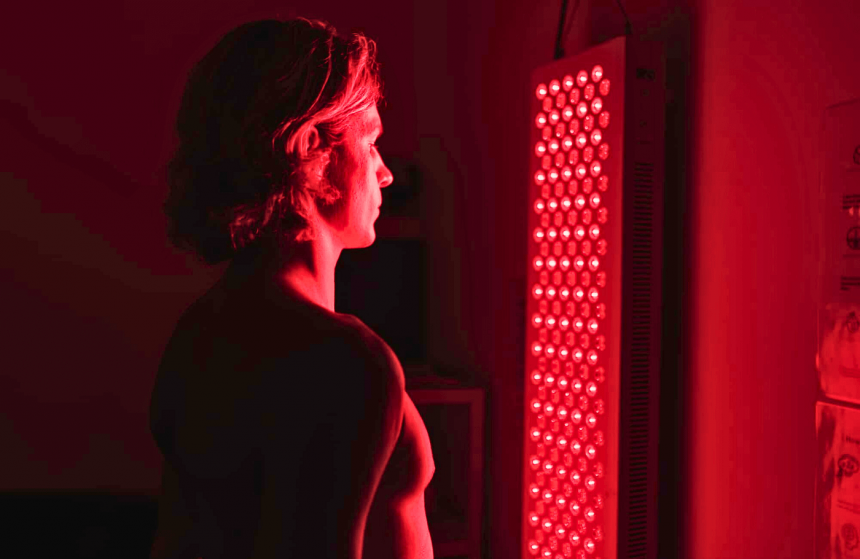Understanding the Fascination with Red Light Therapy
The recent surge in the popularity of red light therapy has been noticeable across various platforms, from online spaces to endorsements by health influencers and even discussions among social circles. But what exactly is the fascination with this therapy? Red light therapy utilizes specific light wavelengths to bolster the body’s biological functions.
Similar to our choices in food and drink, light sources possess the potential to either nourish or harm us. As we delve deeper into understanding light’s impact on fundamental aspects of our well-being, such as sleep, energy levels, mitochondria, immunity, and lymphatic health, it’s become evident that light acts as a pivotal ‘nutrient’ contributing to our holistic health.
What is Red Light Therapy?
At its core, red light therapy endeavors to replicate the effects of sunlight through technological means. The spectrum of nanometer wavelengths ranging from 400 to 750 has served as inspiration for most red light therapy manufacturers, guiding them to mimic these wavelengths in their devices. Their goal is to replicate the skin’s response to sunlight when exposed to red light.
Natural sunlight remains the pinnacle of beneficial light for our health. However, for individuals residing in regions with limited sunlight exposure for substantial periods, issues such as vitamin D deficiency and seasonal affective disorder can significantly impact immune functionality.
The Health Benefits of Different Red Light Spectrums:
Red light therapy devices encompass wavelengths like 630nm, 660nm, 810nm, and 850nm—effectively replicating the beneficial aspects of sunlight during periods of grey, cloudy weather. Each spectrum offers unique advantages:
- 630nm Wavelength: Scientifically demonstrated to benefit skin health by reducing wrinkles, stimulating hair growth, and aiding in acne treatment.
- 660nm Wavelength: Reduces fatigue, inflammation, aids in bone healing, post-injury swelling reduction, alleviates neuropathic pain, and accelerates wound healing. Ideal for post-workout physical recovery.
- 810nm Wavelength: Promotes wound healing, aids in recovery, and even plays a role in stroke recovery and neuroprotection for individuals dealing with moderate to severe strokes or traumatic brain injuries. Additionally, it’s beneficial for psychiatric disorders, stress, anxiety, and hair growth.
- 830nm Wavelength (Near Infrared Light): Reduces infections, accelerates healing, boosts endorphins, enhances bone repair, and growth.
- 850nm Wavelength: Enhances muscle performance and recovery, reduces inflammation, aids in skin healing, and addresses various skin conditions.
The Top 10 Benefits of Red Light Therapy:
These diverse spectrums unveil a multitude of benefits, only skimming the surface of red light therapy’s extensive potential. Exploring these wide-ranging benefits can be a fulfilling journey for anyone keen on optimizing their well-being.
- Optimize Vitamin D Synthesis: Red light therapy doesn’t just complement natural sunlight; it synergizes with it. Exposure to red light helps prime the skin, facilitating increased vitamin D synthesis when you’re out in the sun. Red light does not stimulate Vitamin D synthesis on its own. However, it has a symbiotic relationship that enhances the body’s ability to utilize and create this essential vitamin.
- Improved Skin Health: One of the most touted benefits of red light therapy is its ability to revitalize skin health. The wavelengths used in red light therapy penetrate the skin, stimulating the production of collagen and elastin.
- Reduced Inflammation: Chronic inflammation is a common underlying factor in various health conditions. Red light therapy has emerged as a promising non-pharmacological approach to mitigating inflammation.
- Enhanced Physical Performance and Energy: The application of red light therapy pre- or post-exercise sessions has shown promise in boosting physical performance and aiding in muscle recovery.
- Optimized Mitochondrial Function: Mitochondria, often referred to as the powerhouse of the cell, are essential for generating cellular energy. Red light therapy stimulates mitochondrial function by improving their efficiency in producing adenosine triphosphate (ATP), the body’s primary energy source.
- Increased Circulation: The application of red light therapy has demonstrated a remarkable ability to improve blood circulation.
- Strengthened Body Tissues: Red light therapy’s ability tobolster the body’s tissues is multifaceted.
- Pain Reduction: Chronic pain, stemming from various sources like injuries, inflammation, or underlying health conditions, can significantly impact one’s quality of life.
- Enhanced Hair Growth: For those seeking solutions for hair loss or aiming to promote healthier hair growth, red light therapy presents a promising option.
- Enhanced Antioxidant Capacity: Red light therapy doesn’t just impact the body on a cellular level; it also influences the body’s antioxidant defenses.






